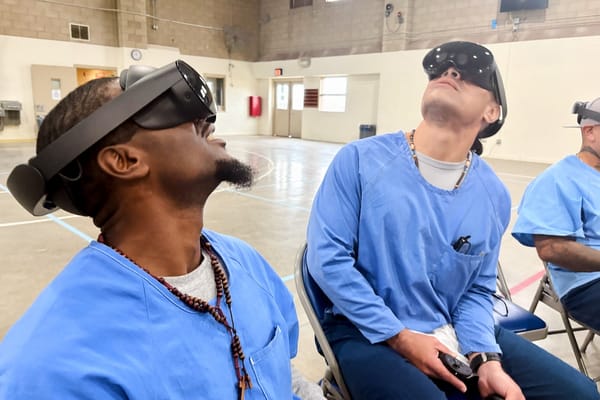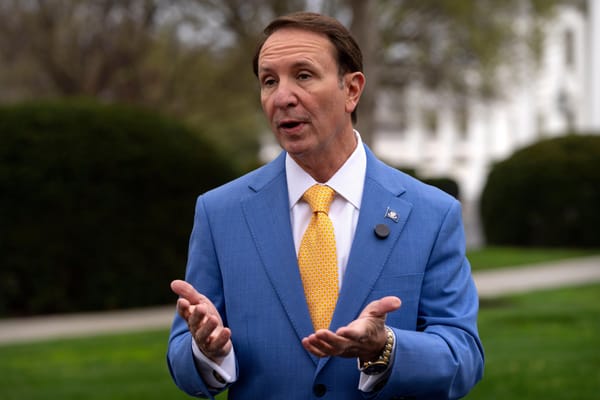Luke Hogg: To Close the Digital Divide, Streamline Federal Funding
‘It is time for the United States to end its haphazard approach to closing the digital divide.’
Broadband Breakfast

Last week, the Senate Homeland Security and Governmental Affairs Committee held a hearing to examine fragmentation, overlap, and duplication of federal programs. Sen. Mitt Romney, R-Utah, took the opportunity to highlight one of the greatest areas of duplicated federal efforts: broadband. With the Joe Biden administration hesitant to take the lead on streamlining federal broadband programs, it’s time for Congress to step in.
For decades, both Democrats and Republicans have consistently affirmed that closing this digital divide is a federal priority. Romney, for example, has often worked with his democratic counterparts to expand broadband access in rural Utah. But, in its eagerness to connect every American, Congress and the executive branch have overseen the proliferation of a complex web of duplicative federal programs.
According to a GAO report from last year, the federal government runs over 130 programs administered across 15 different agencies all with the singular goal of helping Americans get connected. GAO found that, between 2015 and 2020, the federal government invested over $44 billion in closing the digital divide, and recent legislation has appropriated tens of billions more over the next few years. This funding varies, but generally falls into one of three categories: programs intended to expand broadband access, programs intended to make broadband more affordable, and programs intended to build digital skills.
Duplication of federal programs in any instance is undesirable as it decreases the efficiency of federal funding and increases the likelihood of waste, fraud, and abuse. Yet, the unique nature of federal broadband programs magnifies the problems. More often than not, multiple agencies are charged with administering multiple programs with the same basic mission, making it much more difficult to oversee, measure, and ensure projects meet their goals.
Moreover, this discordant system results in regulatory divergence, where programs with the same goal have different requirements and regulations, resulting in needless regulatory bloat and red tape. Fragmentation of federal efforts has steered money to overbuilding networks in areas that are already covered, taking resources away from areas that truly need federal assistance.
At last week’s hearing, Romney appeared taken aback by the magnitude of the problem when speaking to Gene Dodaro, Comptroller General and head of GAO. In response to Romney’s perplexity, Dodaro pointed to the GAO’s recommendations.
With duplication of funding undesirable, GAO ha recommended federal government streamlining
To increase the efficiency and effectiveness of federal broadband funding, GAO has repeatedly recommended that the federal government streamline its efforts. In fact, after national defense related priorities, the top recommendation from GAO’s most recent report on fragmentation, overlap, and duplication is that the federal government needs “a national broadband internet access strategy” to help the government “better manage fragmented efforts … and to address overlap and potential duplication.”
“Who would make an investment long term without a strategy and a way to check the strategy?” Dodaro opined. At least one federal official agrees. When asked about the future of federal efforts to close the digital divide at a separate hearing earlier this week, FCC Commissioner Brendan Carr responded: “I think the time is ripe right now to make sure that we have a coordinated approach to all these different broadband programs.”
In its reports, the GAO has focused its recommendations on the executive branch. Yet, since the report was published, the Biden administration has balked at developing a national broadband strategy strategy and declined to take a position on GAO’s recommendation. Given the considerable amount of money that has recently been appropriated by Congress to set up even more broadband-related programs, it is time for Congress to take matters into its own hands.
The most expedient way for Congress to take action is through the appropriations process. The Appropriations Committees could simply include a directive in the report language that accompanies the appropriations bills calling on the executive branch to develop a national broadband strategy. However, on its own, such a directive may not be enough to force the federal government to streamline federal broadband funding.
Earlier this year, I recommended that both the Appropriations Committees direct the Department of Commerce to undertake a comprehensive comparative analysis of all broadband-related programs. This report would compare the return on investment for these programs to help separate the wheat from the chaff. Taken with a directive to produce a national broadband strategy, such a report would be invaluable in the broader goal of increasing the efficiency of broadband funding.
For too long, Congress and the executive branch have enabled the metastasizing of federal broadband programs. In spite of tens of billions of dollars flowing out of federal coffers to support broadband access and affordability, the digital divide remains. Now, with tens of billions more going to help close the digital divide, it is more important than ever that federal broadband funding is used in the most efficient and effective manner. It is time for the United States to end its haphazard approach to closing the digital divide. It is time for a national broadband strategy.
Luke Hogg is the director of outreach at the Foundation for American Innovation where his work focuses on the intersection of emerging technologies and public policy. This piece is exclusive to Broadband Breakfast
Broadband Breakfast accepts commentary from informed observers of the broadband scene. Please send pieces to commentary@breakfast.media. The views expressed in Expert Opinion pieces do not necessarily reflect the views of Broadband Breakfast and Breakfast Media LLC.











Member discussion